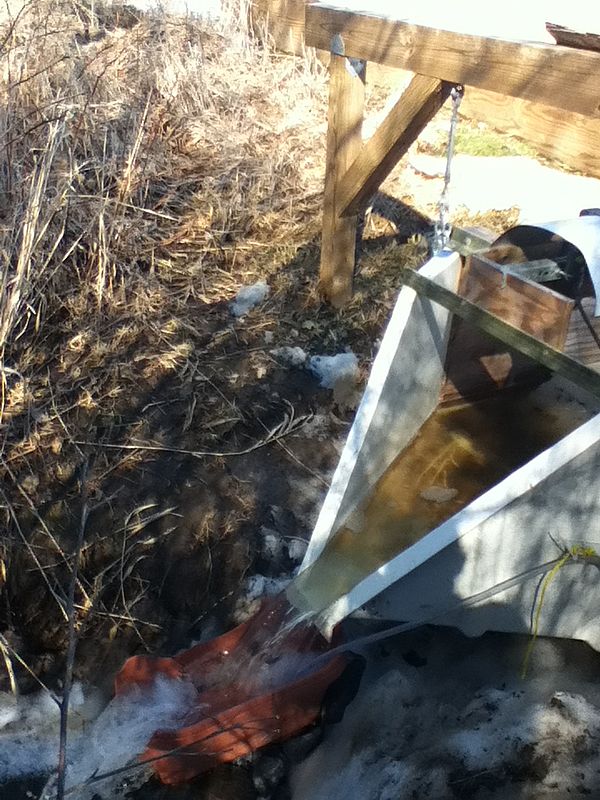Over the last three years the Lake Champlain Committee has been collecting data in a study to determine the effectiveness of agricultural best management practices. The study, led by Stone Environmental, measures run-off from two nearby farm fields at each of six sites then applies a best management practice to one of the fields. The first two years of the study established a baseline relationship and subsequent years assess the effect of the treatment on runoff. LCC has been collecting data at one of the six sites. Due to a very dry 2014 we do not yet have enough information on treatment effectiveness, but the study has yielded some very interesting information nonetheless.
One surprise was the form of phosphorus coming off the fields. It has long been assumed that most of the phosphorus that runs off farm fields is attached to soil particles. Once in the river most of the phosphorus moving downstream is attached to sediment and the rest dissolved; why should the ratio be different for what comes off fields? However, 65% of the phosphorus leaving the study fields has been dissolved rather than sediment-bound. This ratio is closer to what is observed in tile drains than what is observed in streams. Dissolved phosphorus is immediately available to algae while sediment-bound phosphorus has to undergo a chemical transformation before becoming biologically available.
Another surprise was that despite tremendous phosphorus runoff under worst-case conditions, the vast majority of the phosphorus stays on the field. One event that LCC monitored occurred when rain began shortly after a manure application. In fact, the application was cut short on one of the two fields due to the precipitation. Phosphorus loading that day was tremendous, with concentrations in the runoff up to three times greater than raw sewage. However, only a small fraction of what was put on the field made it into the runoff. Approximately 98% of what was applied was still on the field after the rain. So 98% efficiency is the starting point against which the effectiveness of best management practices will need to be evaluated.
Even when farmers diligently apply best management practices the results aren’t always as expected. Cover cropping, growing something on the land after the regular crop has been harvested in order to prevent soil erosion, has long been touted as a means to reduce water pollution. This practice is being tested at two of the sites, however the farmers had trouble establishing cover crops. Low germination rates led to 0% to 9% coverage at one of the sites when the cover crop was planted along with corn, and no more than 10% coverage when planted after corn harvest. These establishment rates are far below what is considered necessary to prevent soil erosion. The poor rate of establishment in the study makes evaluating effectiveness of cover crops challenging.
As this project moves forward, we hope to have a better sense of what can be accomplished with best management practices for farm fields. The results can better direct available funds to those practices likely to deliver the greatest phosphorus reductions.
